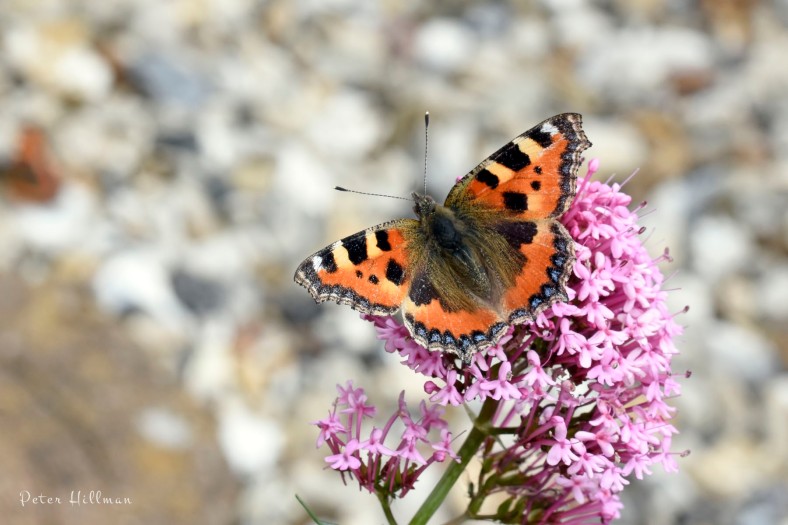Small Tortoiseshell (Aglais urticae)
I spotted this distinctively coloured butterfly as it was happily feeding on blue lobelia which I have growing in hanging baskets.
The upperside ground colour of this butterfly is striking bright orange or brick-red, with a blue studded border to all wings and distinctive black markings on the forewings. The underside colouration is rather dull, but this makes for excellent camouflage when resting or hibernating. Females are larger than males, but there is no other difference. Wingspan 50mm.
The caterpillars feed mainly on Stinging Nettle, but other nettles are used.
One of the first butterflies to appear in spring, even as early as February in the south. Flies May to October in one, two or three broods. Adults hibernate in tree hollows or outbuildings. Found wherever there are flowers, including town gardens and parks. One of our commonest butterflies, resident.









